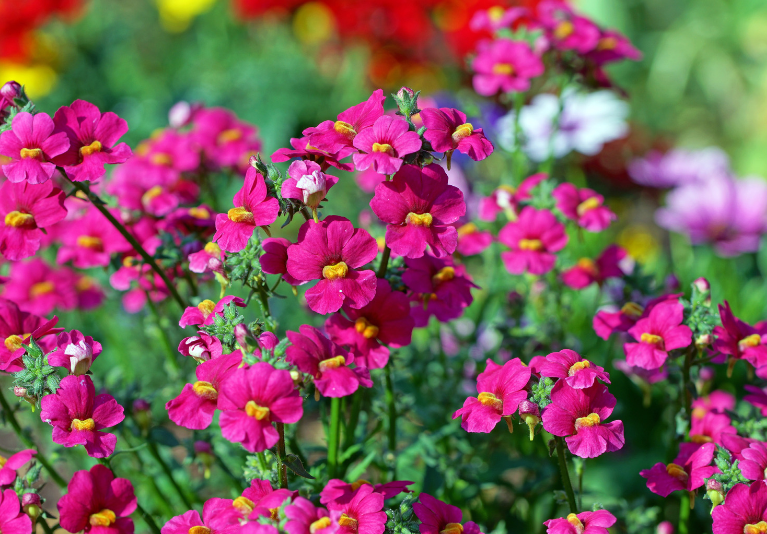Nemesia Plant Information

Any cool-season garden benefits from the vibrant presence of nemesia. Recent advances in breeding have led to the development of far more heat tolerant plants with lovely bicolor blooms and pleasant fragrances.
It’s almost time to plant your summer hanging baskets and containers, and if you want a summer filled with clouds of color and blooms, think about including Nemesia in your list of plants.
It’s tiny, similar to snapdragon-looking flowers, are typically aromatic and good for wildlife.
You will find them in various hues, including pinks, mauves, blues, hot yellows, and oranges, but they always have a yellow eye in the middle.
The somewhat scented blooms are typically organized with a bottom lip that is either complete or bi-lobed and an upper lip with four lobes.
Nemesia Origin
They are from South Africa and belong to the Scrophulariaceae family. There are about 65 species of subshrubs and annual and perennial herbs.
They are often cultivated as semi-hardy annuals in Europe, although some gardeners experiment with them over the winter.
There are several different varieties of the bedding plant Nemesia, most of which are descended from the South African annual plants Nemesia strumosa and N. Versicolor. N. strumosa produces flowers in various colors, including white, yellow, and purple, and can grow to be 15–60 cm tall.
The outer petal veins are frequently purple, while the throats are typically yellow with darker patterns. N. Versicolor has a height of around 50 cm and has a range of colors.
They can be white, blue, mauve, or yellow and frequently have colorful lips. There is a little variant that is barely 20–30 cm tall.
It produces abundant flowers in rose, violet, blue, and white hues. Another delicate perennial species, N. caerulea, with flowers that can be pink, white, or a variety of blue or lilac shades.
Low-growing N. denticulata Award of Garden Merit (AGM) plants have light-purple blooms.
N. Cheiranthus features shooting star-like flowers with thin, white petals that resemble spider webs and a yellow bottom lip with purple patterns. This species may have the most distinctive appearance.
Nemesia Care
You can plant nemesia seeds in the spring or the fall. In the late spring, after the threat of the last frosts has passed, those seeded in the fall can be grown on to produce attractive greenhouse pot plants or be bedded outside.
Plant them in a medium-to-light, somewhat acidic soil with organic matter added, leaving 10-15 cm between them. During dry spells, give them plenty of water to avoid the plants getting weak and spindly.
They benefit from a good cut after they have flowered and will probably give you a second flush of flowers as a treat.
Use Of Nemesia
They can be used as summer bedding in window boxes, hanging baskets, mixed borders, along pathways, and as potted plants in cool greenhouses or conservatories.
Due to their fragile stems, the potted plants most likely need a fortnightly liquid feed and little stakes. They should bloom from June to September, producing a protracted, vibrant display.
Colorful Ensembles

There aren’t many flowers with the variety of colors that nemesia does.
You can discover a hue that works with any combination because it exists in practically any color imaginable (apart from green).
Many kinds feature gorgeous bicolor flowers that, up close, resemble miniature orchids and can be pretty striking.
It adds a lot to hanging baskets and containers thanks to its fast growth habit and the way it spills down the sides.
To appreciate its pleasantly delicate aroma, grow nemesia close to seating areas.
Pests
Aphids and powdery mildew can harm plants, so take precautions.






















